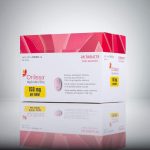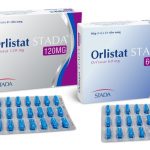Contents
- 1 Still’s Disease
Still’s Disease
Still’s disease, a disorder featuring inflammation, is characterized by high spiking fevers, a salmon-colored rash, and arthritis. Still’s disease is also known as systemic-onset juvenile idiopathic arthritis. It was first described in children but can occur in adults, referred to as adult-onset Still’s disease or AOSD. Still’s disease is named after the English physician Sir George F. Still (1861-1941).
Still’s disease accounts for 10%-20% of all cases of JIA. It affects about 25,000-50,000 children in the United States and is rare in adults, usually affecting those aged 20-35 at symptom onset.
Causes of Still’s Disease
There are different theories regarding the cause of Still’s disease, including infection or autoimmune disorder. However, the exact cause is still unknown. No specific risk factors for developing Still’s disease have been identified.
Still’s Disease and Juvenile Idiopathic Arthritis
Still’s disease is a type of juvenile idiopathic arthritis (JIA) and is referred to as "juvenile" because it primarily affects children under 16 years old. It is considered systemic because it presents with joint inflammation and symptoms of body-wide illness, such as high fevers, swollen glands, and organ involvement. The exact cause of JIA is unknown.
Systemic-onset JIA, previously known as systemic-onset juvenile rheumatoid arthritis (JRA), is the same disease. The naming system for all types of JRA changed a few years ago, and JRA is now referred to as juvenile idiopathic arthritis or JIA.
Symptoms of Still’s Disease
Still’s disease typically begins with systemic symptoms.
- Extreme fatigue accompanies high fevers that rise daily to 102 F (39 C) or higher and rapidly return to normal levels or below.
- Fever spikes occur at approximately the same time every day.
- A faint salmon-colored skin rash comes and goes without itching.
Additional symptoms and signs of Still’s disease include:
- Poor appetite, nausea, and weight loss.
- Swelling of lymph glands, spleen enlargement, and sore throat.
- Inflammation around the heart (pericarditis) and lungs (pleuritis), with occasional fluid accumulation.
- Joint swelling and pain (arthritis), which may initially be overlooked due to systemic symptoms, eventually affecting multiple joints.
100% of Still’s disease patients have high intermittent fever and joint inflammation, while approximately 95% have the characteristic rash, 85% have swollen lymph glands or enlarged spleen and liver, 85% have increased white blood cell count, 60% have lung or pericardial inflammation, 40% have severe anemia, and 20% experience abdominal pain.
QUESTION
Diagnosis of Still’s Disease
Still’s disease is diagnosed based on the typical clinical features of the illness.
- The features include high intermittent fever, joint inflammation and pain, muscle pain, salmon-colored skin rash, swelling of lymph glands or enlargement of spleen and liver, and inflammation of the heart or lungs.
- Persistent arthritis lasting for at least six weeks is required for a firm diagnosis.
- Other diseases must be ruled out, especially infections, cancers, and other types of arthritis.
Many patients with Still’s disease have elevated white blood cell counts and inflammation markers, without evidence of infection. However, traditional markers for rheumatoid arthritis and systemic lupus erythematosus are usually negative.
Specialists Who Treat Still’s Disease
Primary care physicians, including pediatricians, internists, general practitioners, and family doctors, treat Still’s disease.
- They often collaborate with rheumatologists in the care of these patients.
- Depending on organ involvement, other specialists such as cardiologists, pulmonologists, orthopedic surgeons, physical therapists, and occupational therapists may be involved.
(Title Removed)
Treatment of Still’s Disease
Treatment for Still’s disease aims to address inflammation in affected areas, such as the joints. Anti-inflammatory drugs like aspirin or other nonsteroidal medications are used to control symptoms. However, some patients may experience liver function elevations as a side effect. Cortisone medications (steroids) are prescribed for severe symptoms.
In patients with persistent symptoms, drugs that modulate the immune system’s inflammatory response are used. These medications are similar to those used in rheumatoid arthritis treatment. Biologic drugs such as hydroxychloroquine, etanercept, penicillamine, adalimumab, azathioprine, canakinumab, methotrexate, infliximab, and cyclophosphamide are among the options.
Recent studies have found that anakinra, which blocks interleukin 1 (IL-1), and tocilizumab, which blocks interleukin 6 (IL-6), are effective treatments for Still’s disease. Tocilizumab is approved for treating systemic JIA in children.
Prognosis of Still’s Disease
The fever and systemic symptoms tend to resolve within a few months, while arthritis can persist long-term. Chronic arthritis, especially affecting the wrists, is common if not aggressively treated. Newer biologic treatments show promise in preventing progressive joint damage.
Prevention of Still’s Disease
Still’s disease cannot be prevented.
Sources: Klippel, J.H., et al. Primer on the Rheumatic Diseases. New York: Springer, 2008. Koopman, William, et al., eds. Clinical Primer of Rheumatology. Philadelphia: Lippincott Williams & Wilkins, 2003. Ruddy, Shaun, et al., eds. Kelley’s Textbook of Rheumatology. Philadelphia: W.B. Saunders Co., 2000.


